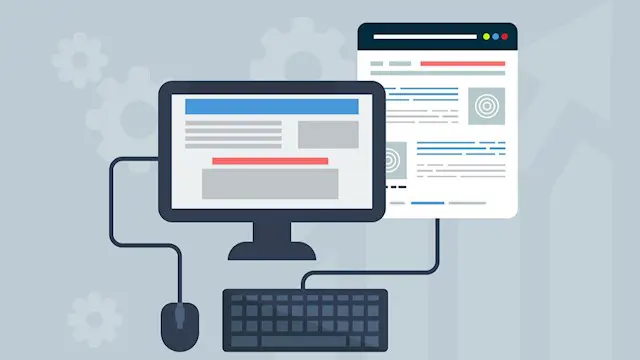- Certificate of completion - Free
- Reed courses certificate of completion - Free

Basics of Website Design
Uplatz
Self-paced videos, Lifetime access, Study material, Certification prep, Technical support, Course Completion Certificate
Summary
Overview
Certificates
Certificate of completion
Digital certificate - Included
Course Completion Certificate by Uplatz
Reed courses certificate of completion
Digital certificate - Included
Will be downloadable when all lectures have been completed
Curriculum
Course media
Description
Basics about Website, the World Wide Web pages usually containing hyperlinks to each other and made available online by an individual, company, educational institution, government, or organization. A website is a collection of publicly accessible, interlinked Web pages that share a single domain name. Websites can be created and maintained by an individual, group, business or organization to serve a variety of purposes.
The Steps to Launch a website:
- Choose a domain name
- Register a domain and sign up with web hosting
- Set up a website using WordPress (through web host)
- Customize your website design and structure
- Add important pages and content
- Set up a navigation menu
- Add an online store (optional)
Who is this course for?
Beginners: Individuals with little to no prior experience in web design who want to learn the fundamentals.
Students: Those studying computer science, graphic design, or related fields who want to build a foundation in web design.
Entrepreneurs/Small Business Owners: People looking to create or manage their own website without relying heavily on professionals.
Freelancers: Professionals who want to expand their skill set to offer web design services.
Hobbyists: Individuals interested in web design as a personal interest or side project.
Career Switchers: Those transitioning into tech or design roles and need to learn the basics of web design.
Marketing Professionals: Individuals who want to understand web design to better collaborate with designers or manage web projects.
Content Creators: Bloggers, influencers, or creators who want to design or customize their own websites.
Requirements
Passion & determination to achieve your goals!
Career path
- Web Designer
- UI/UX Designer
- Front-End Developer
- Graphic Designer
- WordPress Developer
- Website Content Manager
- Digital Marketing Specialist
- E-commerce Website Manager
- Freelance Web Designer
- Web Design Consultant
- Multimedia Designer
- Email Template Designer
- Creative Director
- Visual Designer
- Junior Web Developer
Questions and answers
Currently there are no Q&As for this course. Be the first to ask a question.
Reviews
Legal information
This course is advertised on Reed.co.uk by the Course Provider, whose terms and conditions apply. Purchases are made directly from the Course Provider, and as such, content and materials are supplied by the Course Provider directly. Reed is acting as agent and not reseller in relation to this course. Reed's only responsibility is to facilitate your payment for the course. It is your responsibility to review and agree to the Course Provider's terms and conditions and satisfy yourself as to the suitability of the course you intend to purchase. Reed will not have any responsibility for the content of the course and/or associated materials.
FAQs
Interest free credit agreements provided by Zopa Bank Limited trading as DivideBuy are not regulated by the Financial Conduct Authority and do not fall under the jurisdiction of the Financial Ombudsman Service. Zopa Bank Limited trading as DivideBuy is authorised by the Prudential Regulation Authority and regulated by the Financial Conduct Authority and the Prudential Regulation Authority, and entered on the Financial Services Register (800542). Zopa Bank Limited (10627575) is incorporated in England & Wales and has its registered office at: 1st Floor, Cottons Centre, Tooley Street, London, SE1 2QG. VAT Number 281765280. DivideBuy's trading address is First Floor, Brunswick Court, Brunswick Street, Newcastle-under-Lyme, ST5 1HH. © Zopa Bank Limited 2025. All rights reserved.

